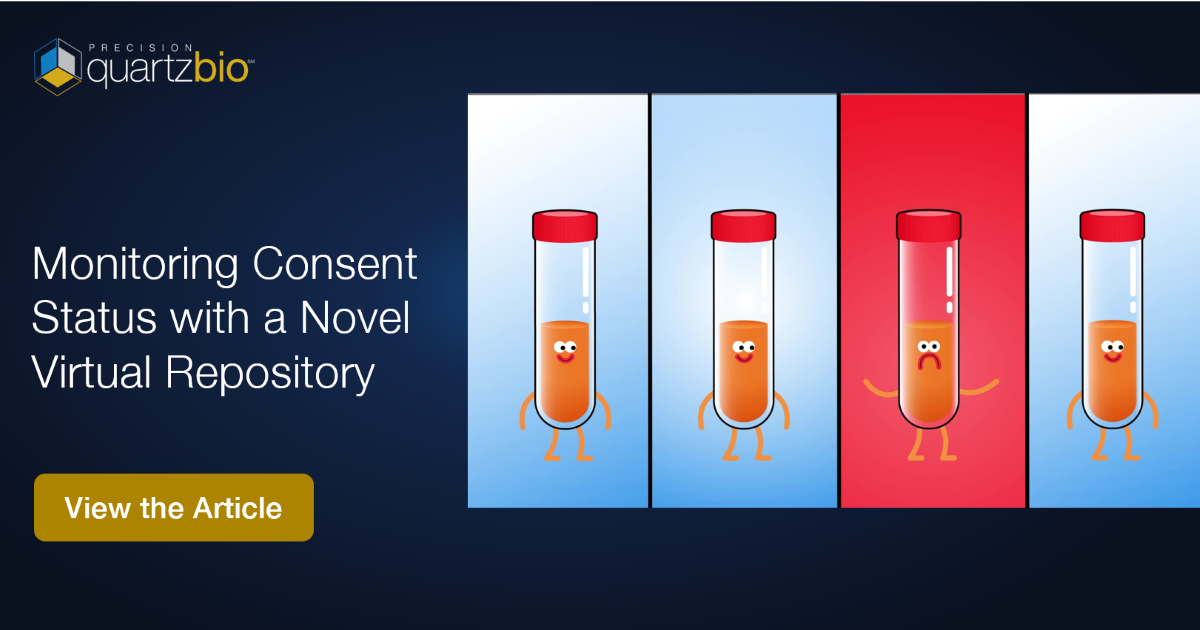
October 8, 2021 — Sponsors are challenged to keep track of complex sample inventories, both on study and for samples collected as part of completed studies that might be later mined for translational research needs. We frequently hear that teams spend significant time manually cross-referencing spreadsheets of inventory data, to answer questions such as:
- “How many whole blood samples with a particular mutation do we have across all phase I studies?”
- “Can we report sample expiration status across all of our contracted biorepositories?”
- “When we identify a sample of interest, how can we confirm consent status?”
To address this challenge, many teams use QuartzBio’s smart data aggregation/integration technology to rapidly generate a comprehensive virtual master sample inventory (MSI) across studies, vendors (central lab, specialty labs, data management CRO) and source systems (EDC, LIMS, assay data).
In this post, we focus on one specific element of complexity facing the “bedside to bench” paradigm: the fact that sample collections for the purpose of facilitating future translational research are based on optional, specific consent. This type of collection is advantageous to translational research teams, but it has a flip side:
Because not all samples are consented, every sample needs to be checked against consent given as consent is patient-centric.
Consent may further depend on a variety of factors, including protocol, consent version, consent expiration, location of the site (and applicable local consent requirements), and potential requirements for re-consent throughout the study.
QuartzBio’s virtual Sample Inventory Management (vSIM) platform features a dashboard flagging all samples with invalid collection based on consent (Figure 1).

Figure 1. QuartzBio sample consent dashboard. This example shows a case in which a patient did not consent to optional DNA and biopsy sampling. However, a biopsy sample was taken and received, and thus was collected in violation of consent.
All instances where consent is potentially violated are reported out and flagged in the platform, which can also flag samples with consent expiration and provide insights into sample restrictions for future research for stored samples.
The ability to generate this information on an ongoing basis throughout the study allows for a significantly streamlined process.
Master Sample Inventory Dashboard

Figure 2. Master Sample Inventory Dashboard. Quickly report up-to-date sample status and location based on sample type, timepoint, testing status, treatment groups, site, consent, protocol revision, and other identifiers. Point-and-click access to underlying protocol information and ancillary files, such as PDFs.
Register for our on-demand webinar to learn more about keeping track of samples and their consent status. Adam Brown and Mike Waters of QuartzBio will demonstrate the power of this interactive technology through this 30-minute session with Q&A.

